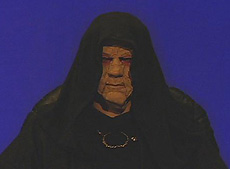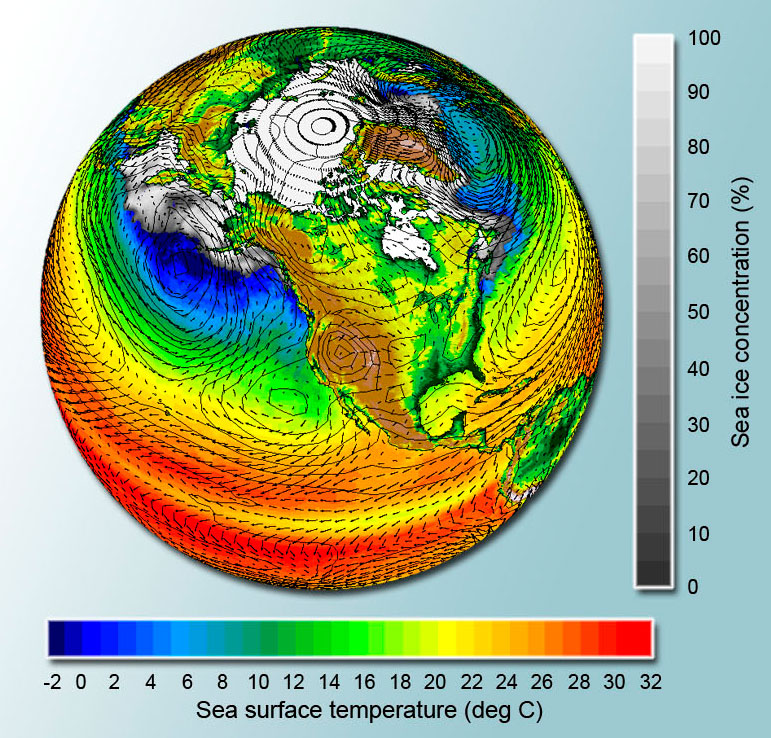|
Fri., December 8
11:00 a.m. Computing Techniques Seminar
- FCC 1
Speaker: N. Witheridge, Macquarie University
Title: Identity and Access Management (IAM) Suite:
A Shibboleth-Based Platform for Collaborative eResearch
12:00 p.m.
Wellness Works Brown Bag Seminar -
Curia II
Speaker: S. Jencius (MS, LPC)
Title: 'Tis the Season to be Anxious: Using Cognitive
Behavioral Therapy to Reduce Holiday Stress
3:30 p.m. Director's Coffee Break - 2nd floor crossover
4:00 p.m. Joint Experimental Theoretical Physics Seminar -
1 West
Speaker: D. O'Neil, Simon Fraser University
Title: Evidence for Single Production of Top Quarks at DZero
and a First Direct Measurement of lVtbl
8:00 p.m. Fermilab International Film Society - Auditorium - $5
Mies vailla menneisyyttä (The Man Without a Past)
Sat., December 9
8:00 p.m. Fermilab Arts Series - Auditorium
Holiday a cappella with Chicago a cappella
Mon., December 11
3:30 p.m. Director's Coffee Break - 2nd floor crossover
4:00 p.m. All Experimenters' Meeting - Curia II
Special Topic: Meson Test Beam Upgrade
THERE WILL BE NO PARTICLE ASTROPHYSICS SEMINAR TODAY
Click here for NALCAL, a weekly calendar with links to additional information. |
Friday, December 8
-Old Fashioned Ham and Bean
-Philly Style Chicken
-Braised Pork Chops
-Stuffed Manicotti
-Roasted Veggie and Provolone Panini
-Assorted Slice Pizza
-Baked Potato
Wilson Hall Cafe Menu |
|
Wednesday, December 13
Lunch
Roast Pork Loin with Lingonberry Sauce
Braised Red Cabbage
Dilled New Potatoes
Spiced Honey Cake
Thursday, December 14
Dinner
Coquille St. Jacque
Medallions of Pork Tenderloin
with Port Mushroom Sauce
Corn Risotto
Vegetable of the Season
Chocolate Fondue with Assortment of Fruit
Chez Leon Menu
Call x4598 to make your reservation. |
|
|
Crawford to shoot Star Wars Forgotten Realm at Fermilab

Chris Olsen of the Accelerator Division will play Emperor Palpatine. Scott Lane and Jim Dejan applied the prosthetics and make up; the process takes 3 hours.
Come springtime, don't be surprised if you see a wookie running through the Fermilab Village. Main Control Room Crew Chief Darren Crawford is producing a Star Wars fan movie, and he plans to shoot some scenes at the lab in March or April. "I've already scouted some spots in the pine forest near the Village and the prairie near the Lederman Center," said Crawford. "A lot of Star Wars characters will be wandering around for a few days."
Crawford, who shares a May 25 birthdate with the first of the Star Wars movies, is writing, casting, shooting, directing and editing the 2 and 1/2-hour film. Titled "Star Wars Forgotten Realm," the movie fits somewhere in Star-Wars time between Episode 3 and Episode 4, at the beginning of rebellion against the Empire. "Two rebels are shot down on a planet and they come across a Jedi who has been stranded there for years," said Crawford. "The Empire finds the Jedi and Vader confronts him."
Crawford says the moment he knew the film would work was when a local fan arrived to audition for the part of Darth Vader. "He was about 6'5" and he had the fiberglass helmet...the whole thing," said Crawford. "His reading just blew me away." In addition to hundreds of other local actors and family members (Crawford's six-year-old daughter will play the young Princess Leia), nine Accelerator Division employees will act, provide music, create computer-generated special effects, and construct the sets. Fermilab Today's Accelerator Update author Bruce Worthel, who is trained in martial arts, will provide light-saber choreography.
"I've wanted to do this for years," said Crawford. "That first day, when everyone was assembled...it was like a feeling of euphoria."
--Siri Steiner |
The Earth System Grid: Climate data for the global community
 Results from the Parallel Climate Model depicting wind vectors, surface pressure, sea surface temperature and sea ice concentration. Prepared from data published in the Earth System Grid by Gary Strand, NCAR.
Results from the Parallel Climate Model depicting wind vectors, surface pressure, sea surface temperature and sea ice concentration. Prepared from data published in the Earth System Grid by Gary Strand, NCAR.
For the past two years, the Earth System Grid has helped scientists around the world study, analyze and predict all facets of the Earth's climate. This U.S. data grid provides almost 160 terabytes of climate-related simulation data to scientists worldwide through two portals.
Through the first portal, more than 3,000 scientists can find and download 130 terabytes of data hosted at four U.S. supercomputing centers: The National Center for Atmospheric Research; and Oak Ridge, Lawrence Berkeley, and Los Alamos National Laboratories. The data represents six years of U.S. earth system and climate modeling simulations.
Read More |
New Scientist,
December 7, 2006:
Black hole seen devouring star in best detail yet
A black hole has been seen devouring a star in the best detail yet, thanks to observations made over the course of two years by NASA's GALEX spacecraft. Such observations will help astronomers weigh black holes that are too far away to study in any other way.
Colossal black holes at the centres of galaxies are thought to swallow stars that wander too close to them about once every 10,000 years. Three black holes had previously shown signs of such starry meals when the otherwise quiet objects flared up in X-rays. The flares suggested each black hole's gravity had ripped apart a nearby star before slowly devouring its remains.
But after their initial detection, those flares were not re-observed for another 10 years or so. That left critical holes in scientists' understanding of the events, which fade over time. "From the way the flare fades, you can figure out how much gas from the star was swallowed by the black hole and you can estimate the mass of the black hole," says Suvi Gezari of Caltech in Pasadena, US.
Read More |
|
|
Parameters for the Linear Collider: An update
This column is written by Barry Barish, director of the Global Design Effort for the International Linear Collider.
 |
| Barry Barish |
As we explore the possible trade-offs to make the ILC Reference Design as cost effective as possible, we have needed sharper definitions for some of the stated parameters, making us consider alternatives. With this in mind, the International Linear Collider Steering Committee (ILCSC) reconvened their parameters subcommittee who wrote the original parameters report that dictates the scientific requirements and hence the design for the ILC. In August, I wrote about this ILCSC action, gave the motivation and charge to the committee, and anticipated that a parameters update would be the result. The parameters subcommittee has now issued its update. This revised document is very timely for us as we take the final decisions before freezing the Reference Design Report.
The ILCSC parameters subcommittee is global in nature, having members from Asia (Sachio Komamiya and Dongchul Son), from Europe (Rolf Heuer (chair) and Francois Richard) and from the Americas (Paul Grannis and Mark Oreglia). Overall, the updated report is consistent with the original and contains some clarifications, but no major changes. From our side, the Reference Design Report (RDR) that we are producing is consistent with this parameters report.
The update reaffirms that the baseline maximum centre-of-mass energy should be 500 GeV. In addition, it provides some necessary guidance to clarify exactly what that implies for the machine design. In particular the report states that "removing safety margins in the energy reach is acceptable but should be recoverable without extra construction. The maximum luminosity is not needed at the top energy (500 GeV), however, 500 GeV should be reachable assuming nominal gradient." We are in the process of analyzing what margin to provide in the RDR, but in any case, we intend to follow the key point in this recommendation -- allow for the provision of full luminosity at the top energy. This means extra un-instrumented tunnel length, providing the margin needed, will be incorporated into the baseline.
Read More |
It won't be empty long

Dear FT:
Many of us from Fermilab's CMS Physics Center are at CERN this week, attending a major CMS meeting. As you know, CMS started lowering its first detectors into the underground cavern, some 300 feet below the ground (see Photo of the Day, Friday, December 1). Boaz Klima and I were given a tour of the CMS cavern and we had a chance to take a photograph in front of a large piece of the CMS detector--the muon endcap system (called "YE+3" in the CMS lingo). The detector cavern will soon be filled with other parts of the CMS detector. This photo offers a unique view of how it looks before the entire detector is lowered into its final position to take data next year.
Best regards,
Greg Landsberg
Brown University, CMS
|
|
Telephone-based social engineering attack against Argonne Credit Union
An Argonne employee recently received a telephone message indicating that he needed to verify his account information by calling either of two phone numbers, one toll free the other direct. Neither of these phone numbers is associated with ACU, and ACU is not making these calls. If you receive such a request, do not call the number and do not give the requester any information. Save the message, or note the number they provide, and report it to the Argonne Credit Union using a phone number obtained from a reliable source, such as your monthly statement, telephone book, or the ACU web site.
Time to think about retirement plans
As the end of the year approaches, it is time to think about your retirement savings for the upcoming year. Effective January 1, 2007, the maximum amount that you can contribute to your 403(b) supplemental retirement account increases to $15,500.
Employees that are age 50 or older, or who will turn 50 during 2007, may make additional catch-up contributions of up to $5000.
If you want to change your contribution, you will need to complete an agreement for salary reduction form, which can be obtained from the Benefits Office.
If you have questions, please contact Scott Lindsey at extension 4362 or Mary Todd at extension 4361.
Upcoming Activities |
|